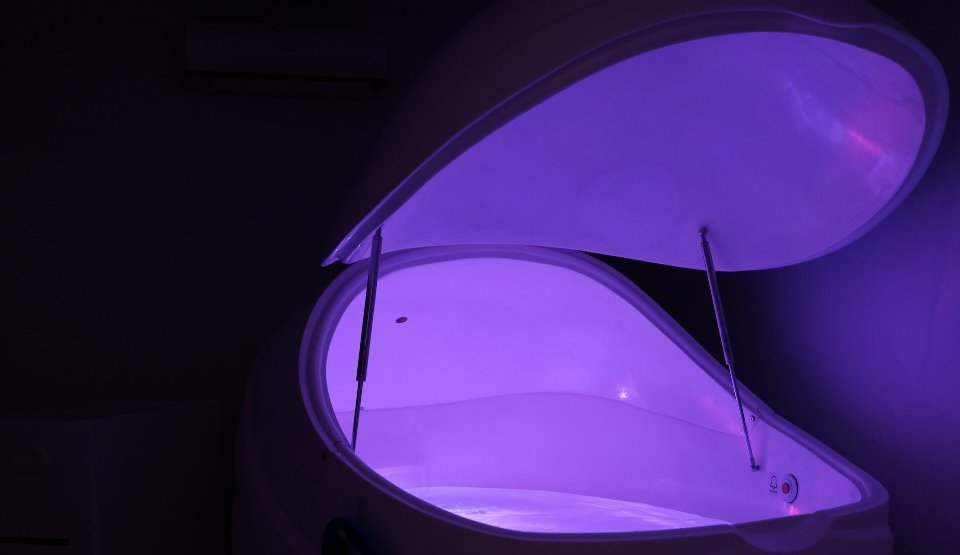
Float Therapy — also called Sensory Deprivation Tank Therapy — involves floating in a closed, water-filled tank that aims at sensory deprivation by reducing stimuli from the outside world (notably light and sounds). It’s thought that using a flotation tank can help relax people.
Mind that the flotation tank also goes by a variety of other names which include isolation tank, sensory deprivation tank, float tank, float pod, or float cabin, among others.

As it is, some evidence shows that Float Therapy can diminish high blood pressure, heart rate, anxiety and stress. In addition, some users report alleviation of headaches, improvement of sleep quality, relief of muscle pains and tensions, reduced depression, and a sense of overall wellbeing.
The flotation tank is filled with salt and warm water (around 35 degrees Celsius), which allows you to float easily and without effort on your back while the face stays above water. Typically, you’ll enter with a swimsuit and also use earplugs to further reduce sounds. In the tank, there will be no or minimized light.
Maybe superfluous to say, but you will not be “locked up” and you can leave the tank lid open or open it yourself whenever you feel like. A session usually lasts about an hour, although longer sessions up to ninety minutes are also offered.
There may also be some downsides to Float Therapy. Some people have reported hallucinations while inside the tank, or even increased anxiety and paranoia, which is of course quite the opposite of what a flotation tank aims at.
In addition, the water in the flotation tank may also increase the risk of skin rashes, irritation, and swelling because of the salt used. Cleanliness of the tank may also be an issue, that is, bacteria may infect the tank if not properly cleansed.
At any rate, using a flotation tank is contraindicated for people suffering from claustrophobia, epilepsy, hypotension (low blood pressure), or infections and open wounds.
Receive occasional news about our new eBook and Video Workshop publications.

















